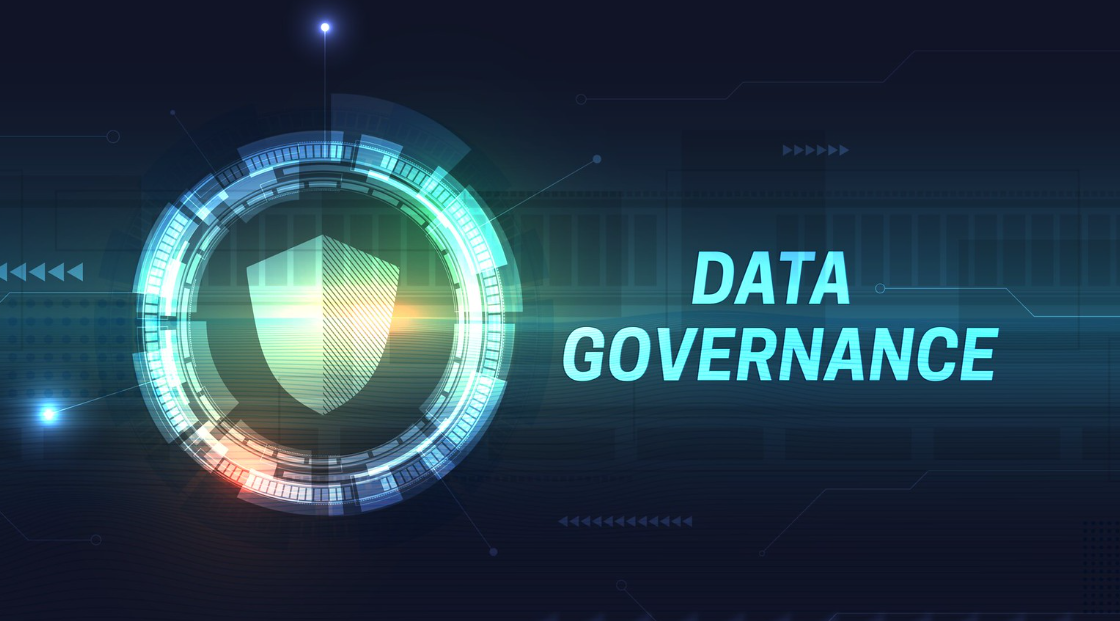What Is Data Governance and MDM & 5+ Important Reasons Why
Master Data Management (MDM) has become critical for organizations to improve data quality, support digital transformation, and drive innovation. However, the success of any MDM initiative is heavily reliant on effective data governance practices. Data governance plays a critical role in ensuring the accuracy, consistency, and completeness of master data, as well as supporting compliance with regulations and protecting against data breaches.
In this article, we will explore the role of data governance in MDM (sometimes referred as data governance MDM), its importance for modern businesses, the components of effective data governance in MDM, and the best practices for implementing a data governance program in MDM.
By the end of this article, readers will understand the importance of data governance in MDM and the steps necessary to develop an effective data governance strategy.
The Role of Data Governance in MDM
What is Data Governance?
Data governance is the overall management of the availability, usability, integrity, and security of an organization’s data. It encompasses the people, processes, and technology required to ensure that data is accurate, consistent, and complete. Data governance involves establishing clear policies, procedures, and standards for managing data and ensuring that they are followed consistently across the organization.
The Role of Data Governance in MDM
Master Data Management (MDM) is the process of creating and maintaining a single, trusted source of critical business data such as customer, product, and supplier data. Effective MDM requires accurate, consistent, and complete customer data, which can be achieved through effective data governance practices.
Data governance plays a critical role in MDM by ensuring the accuracy, consistency, and completeness of master data. By using reference data and establishing clear policies, procedures, and standards for managing master data, organizations can maintain a single source of truth for critical data, which supports informed decision-making, efficient operations, and business growth.
The Importance of Data Governance in MDM
Implementing data governance in MDM has several benefits. By ensuring the accuracy, consistency, and completeness of master data, organizations can improve their overall data quality. This leads to better, business value through insights and decision-making, increased operational efficiency, and improved customer satisfaction.
Moreover, implementing data governance in an enterprise MDM provides organizations with a comprehensive view of their data landscape, enabling them to identify data dependencies, redundancies, and inconsistencies. This supports more effective data management, which in turn drives innovation, improves operational efficiency, and supports digital transformation.
How Data Governance Supports Regulatory Compliance in MDM
Effective data governance is also essential to support regulatory compliance. Regulations such as GDPR, HIPAA, and CCPA require organizations to manage and protect sensitive data effectively. A comprehensive data governance strategy enables organizations to identify, classify, and manage sensitive data to minimize the risk of data breaches, financial loss, and reputational damage. By implementing effective data governance practices, organizations can ensure that they are complying with applicable regulations and mitigating the risk of regulatory fines and penalties.
Components of Effective Data Governance in MDM
Establishing Clear Roles and Responsibilities
One of the critical components of effective data governance in MDM is to establish clear roles and responsibilities. This includes identifying the key stakeholders who are responsible for managing master data, defining their roles and responsibilities, and ensuring that they are accountable for the master data entities they manage.
This helps to ensure that all stakeholders understand their responsibilities and are aligned in their approach to managing master data.
Developing Policies and Procedures for Data Management
Another critical component of effective data governance in MDM is to develop clear policies and procedures for managing master data. This includes developing data quality standards, data retention policies, data classification guidelines, and data access controls.
By establishing clear policies and procedures, organizations can ensure that data is managed consistently and in compliance with applicable regulations.
Ensuring Data Security and Privacy
Data security and privacy are critical components of effective data governance in MDM. Organizations must ensure that master data is protected against unauthorized access, use, or disclosure. This includes implementing robust data security measures such as encryption, access controls, and data masking. For those looking for more comprehensive insights and solutions on data security, rhinonetworks.com offers valuable resources and tools.
Additionally, organizations must ensure that they comply with applicable data privacy regulations, such as GDPR and CCPA, which require organizations to protect the privacy rights of individuals whose data they process.
Monitoring and Enforcing Compliance
Finally, effective master data governance in MDM requires monitoring and enforcing compliance with established policies and procedures. This includes implementing regular data quality checks, conducting data audits, and enforcing data access controls. By monitoring and enforcing compliance, organizations can ensure that master data is managed consistently and in compliance with applicable regulations.
Best Practices for Implementing Data Governance in MDM
Start with a Clear Understanding of Business Goals and Objectives
Before implementing data governance in MDM, it’s important to have a clear understanding of the organization’s business goals and objectives. This includes understanding how data governance and master of data supports business processes, identifying critical data elements, and determining data quality standards.
By starting with a clear understanding of business goals and objectives, organizations can ensure that their data governance framework aligns with their business needs.
Establish a Data Governance Framework that Aligns with Organizational Needs
An effective data governance MDM framework is critical to the success and implementation of data governance in MDM. Organizations should develop a framework that aligns with their organizational needs and that includes clear policies and procedures for managing master data. The framework should also define roles and responsibilities for managing master data and include processes for monitoring and enforcing compliance.
Involve Key Stakeholders in the Data Governance Process
Implementing MDM and data governance requires buy-in from key stakeholders. This includes business leaders, data stewards, data analysts, and IT personnel. By involving key stakeholders in the data governance process, organizations can ensure that all stakeholders have a clear understanding of their roles and responsibilities and are committed to ensuring data quality, accuracy, and consistency.
Implement an Ongoing Process for Monitoring and Enforcing Data Governance Policies
Finally, an ongoing process for monitoring and enforcing data governance policies is essential to ensuring that master data is managed consistently and in compliance with applicable regulations. This includes implementing regular agreed levels of data integration, data quality checks, conducting data audits, and enforcing data access controls.
By implementing an ongoing process for monitoring and enforcing data governance policies, organizations can identify and address data quality issues proactively.
The Benefits of Data Governance in MDM
Improved Data Quality
Data governance helps to ensure that master data is accurate, consistent, and complete. By establishing clear policies and procedures for managing master data, organizations can identify and address data quality issues proactively. This leads to better data quality, which in turn supports better business insights and decision-making.
Enhanced Data Security and Privacy
Master data often contains sensitive information that requires protection from unauthorized access or misuse. Data governance helps to ensure that master data is secure and that access to it is restricted to authorized personnel only. This helps to protect the organization from data breaches and other security threats.
Better Regulatory Compliance
Data governance helps organizations to comply with applicable regulations and standards for managing master data. By implementing policies and procedures that align with regulatory requirements, organizations can avoid costly fines and other penalties for non-compliance. Additionally, effective data governance can help organizations to demonstrate their compliance to regulators and other stakeholders.
Increased Efficiency and Cost Savings
Effective data governance can also lead to increased efficiency and cost savings. By ensuring that master data is managed consistently and that data quality is high, organizations can reduce the time and effort required for data management. This can lead to increased productivity and cost savings for the organization.
The Challenges of Implementing Data Governance in MDM
Resistance to Change
Data governance often requires changes in organizational culture, processes, and technology. These changes can be met with resistance from employees who are comfortable with the status quo. Resistance to change can make it difficult to implement new data governance policies and procedures, leading to delays and reduced effectiveness.
Lack of Resources and Support
Implementing a data governance initiative in MDM requires resources, including funding, personnel, and technology. Organizations may struggle to find or allocate the necessary resources to support data governance initiatives, leading to limited effectiveness or outright failure. Additionally, without executive support and buy-in, data governance initiatives may not receive the necessary attention and resources.
Difficulty in Aligning Data Governance Practices with Organizational Culture and Goals
Data governance policies and procedures must align with organizational culture and goals to be effective. If data governance practices conflict with organizational culture or goals, they may not be adopted or may be circumvented, leading for example to limited effectiveness. Aligning data governance practices with organizational culture and goals requires a deep understanding of the organization and its priorities.

Overcoming Challenges and Achieving Success
Data governance is critical for the success of MDM initiatives, but implementing it requires a deliberate and strategic approach. Organizations must build a strong business case, identify and engage key stakeholders, develop a comprehensive data governance framework, and implement ongoing monitoring and evaluation to ensure the effectiveness of their data governance practices.
Building a Strong Business Case for Data Governance in MDM
To build a strong business case for data governance in MDM, organizations must first understand the benefits of data governance and how it supports their business goals and objectives. They should identify the specific pain points and challenges they face in managing their data, and how data governance can address those challenges.
Organizations should also quantify the potential return on investment value (ROI) of data governance by assessing the costs associated with poor data quality, security breaches, and regulatory non-compliance, as well as the potential cost savings and revenue generation that can be achieved through improved data management.
Identifying and Engaging Key Stakeholders
Effective data governance requires buy-in and support from key stakeholders across the organization, including senior executives, business leaders, IT professionals, and data owners and customers. Organizations should identify these stakeholders and engage them in the data governance process from the outset.
Stakeholders should be involved in defining data governance policies and procedures, establishing roles and responsibilities for data governance team, and developing a comprehensive data governance framework. They should also be involved in ongoing monitoring and evaluation of data governance practices to ensure their effectiveness and alignment with organizational goals.
Developing a Comprehensive Data Governance Framework
A comprehensive data governance framework includes policies and procedures for data management, as well as processes for monitoring and enforcing those policies. The framework should define clear roles and responsibilities for data owners, data stewards, and other stakeholders, and establish processes for data quality management, data security, data flow, and regulatory compliance.
The data governance framework should also align with organizational culture and goals, and be flexible enough to accommodate changes in the organization or in the data landscape. It should be developed collaboratively with the business unit and key stakeholders to ensure buy-in and support.
Ongoing Monitoring and Evaluation of Data Governance Practices
Data governance is a continuous process that requires monitoring and evaluation to ensure its effectiveness and alignment with organizational goals. Organizations should establish metrics for assessing the effectiveness of data governance practices, and regularly review those metrics to identify areas for improvement.
Data governance should also be evaluated in the context of broader organizational initiatives, such as digital transformation, to ensure that it continues to support organizational goals and priorities.
Wrap Up
In conclusion, data governance plays a critical role in the success of master data management initiatives. With the ever-increasing volume and complexity of data, organizations need to ensure that their data is accurate, consistent, and secure. Data governance provides a framework for achieving these goals by establishing clear roles and responsibilities, developing policies and procedures for data management, ensuring data security and privacy, and monitoring and enforcing compliance.
Implementing effective data governance in MDM can be challenging, but the benefits are well worth the effort. Improved data quality leads to better decision-making and increased operational efficiency. Enhanced data security and privacy protect organizations from costly data breaches and regulatory penalties. Better regulatory compliance ensures that organizations stay within legal and ethical boundaries, while increased efficiency and cost savings help organizations achieve their business objectives.
To overcome the challenges of implementing data governance in MDM, organizations must build a strong business case, identify and engage key stakeholders, develop a comprehensive data governance framework, and establish an ongoing process for monitoring and evaluating data governance practices.
With these steps, organizations can ensure that their MDM initiatives are successful, and their data is a valuable asset to their organization.
Article may also be published on author’s Medium.com profile
More from the author on RTE, Agile coach, Scrum Master / Product Owner / Why you need a Career Coach / Interview Coach / Managing Managers / IT Career switch. Ilam also is a keen AI enthusiast & writes about popular AI tools like Jasper, Writecream etc.

